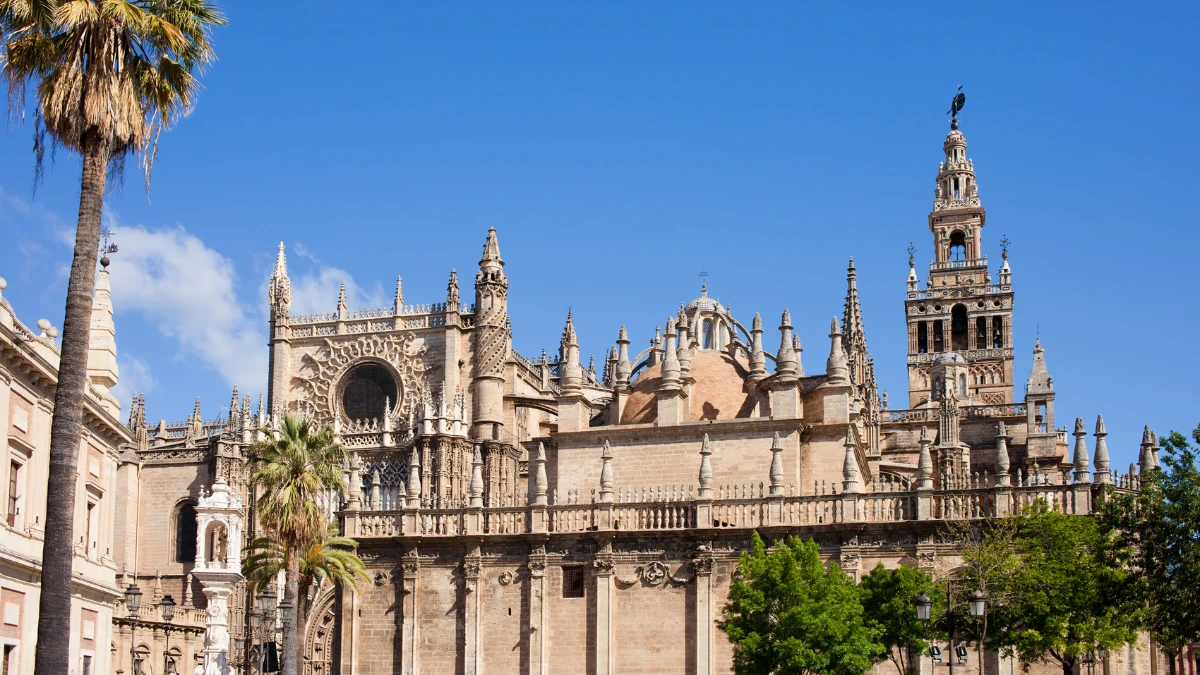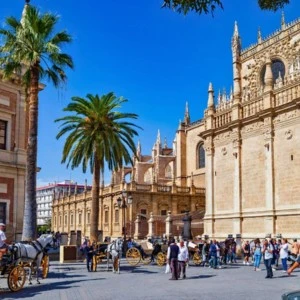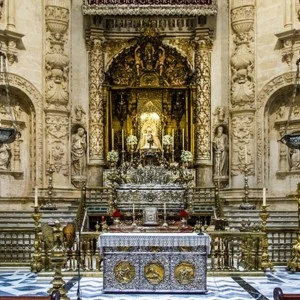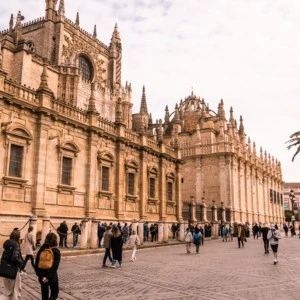Did you know that the Italian Christopher Columbus is buried in Seville Cathedral, which is in Spain?
Or did you know that a wooden crocodile, which was part of a marriage proposal gift, still hangs from the roof of the Seville Cathedral?
For more such interesting facts about Seville Cathedral, continue reading.
Quick facts about Seville Cathedral
| Fact | Info |
| Size | Largest Gothic cathedral in the world |
| Age | Built between 1401–1506 |
| Must-See Spots | Giralda Tower, Columbus’s Tomb, Golden Altarpiece |
| Visitor Count | Over 2 million annually |
Seville Cathedral was built on a Mosque
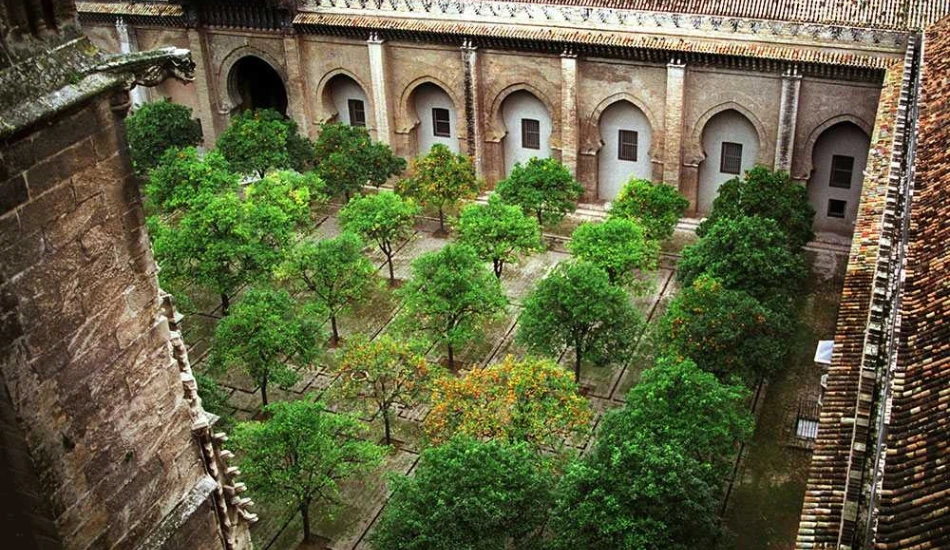
Did you know Seville Cathedral wasn’t always a cathedral? It actually stands on the site of a 12th-century mosque!
When the Catholic monarchs took over Seville in 1248, they didn’t build a new church. They simply converted the mosque into a Cathedral.
Several parts of the original mosque still survive today:
- The Giralda Tower was originally the minaret.
- The Patio de los Naranjos (Courtyard of Orange Trees) served as the mosque’s ablution courtyard.
- Puerta del Perdón (Gate of Forgiveness) remains as an original entrance.
This fascinating mix of Islamic and Christian architecture makes the cathedral a unique cultural monument.
The Giralda’s ramps were made for horses
Related Reads
Giralda Tower is 104.5 meters tall, and if stairs had been built, the Sultan and his men would have had to climb around 550 stairs to get to the top.
Since the Sultan didn’t want to do this, he had 35 ramps instead of stairs and took his horse to the top.
This design is very rare and sets the Giralda apart from other bell towers that typically have stairs.
Today, visitors can walk up these ramps to reach the top, where they are rewarded with spectacular views of Seville.
The climb is not too difficult, as the ramps make it easier to ascend compared to stairs, making it accessible for most visitors.
A bell in Giralda Tower weighs as much as a rhinoceros
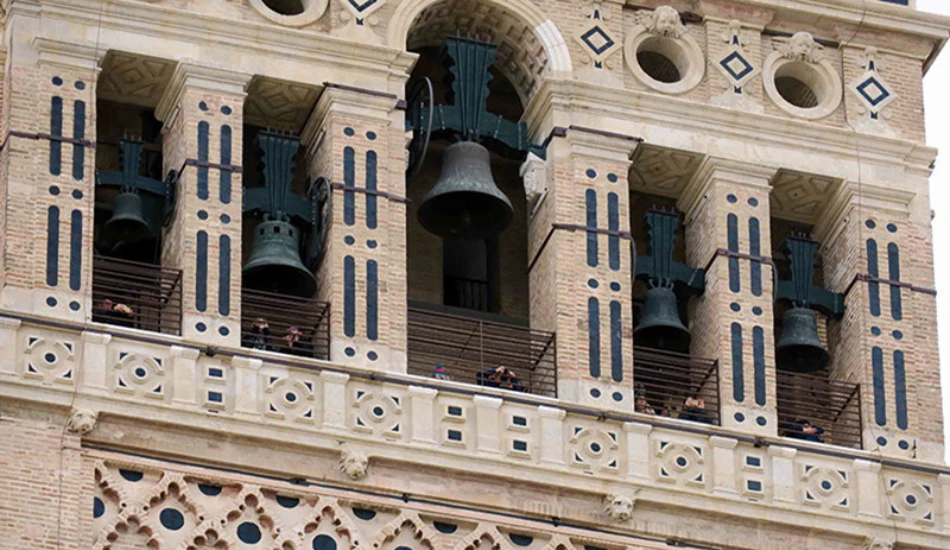
The Giralda tower holds 24 bells, each with its own unique tone and purpose.
The biggest bell, nicknamed La Giralda, weighs around 1.5 tons, as heavy as a rhinoceros! It takes enormous strength and precision to move or repair it.
These bells aren’t just decorations; they’ve been part of Seville’s history for over 500 years. They’ve rung out for royal weddings, grand celebrations, and even warnings during tough times.
When all the bells ring together, the sound is so powerful that it can be heard miles away.
RECOMMENDED
They set out to build the largest Gothic cathedral, and succeeded
The builders of Seville Cathedral weren’t just aiming high—they were aiming sky-high.
They set out to create the largest Gothic cathedral in the world, covering a staggering 11,520 square meters (124,000 square feet).
But their ambition wasn’t just about size—it was about making something so beautiful and intricate that it would leave people speechless for centuries.
The cathedral has 80 chapels, each more enchanting than the other, and its vaulted ceilings soar to 42 meters (138 feet)—as tall as a 14-story building!
The cathedral took 105 years to build
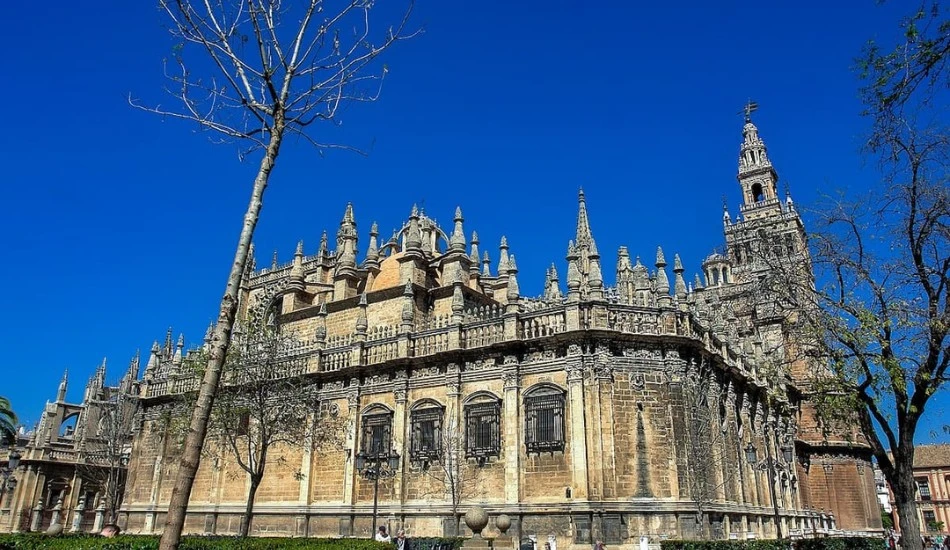
Construction of Seville Cathedral began in 1401 and took 105 years to complete, finally concluding in 1506.
The cathedral’s high altar, considered the largest in Christendom, is covered entirely in gold leaf. This single masterpiece took 80 years to complete – nearly as long as the rest of the cathedral’s construction!
Generations of builders worked on this cathedral, dedicating their lives to a project they would never see finished.
The cathedral is a masterpiece of Gothic architecture, with intricate details carved into stone that seem almost impossible to create without modern tools.
But the sheer effort and skills of these craftsmen made it possible in the age when there were no modern tools, and everything was to be done by hand.
Also read: History of Seville Cathedral
Even after 600 years, it is the largest Gothic cathedral in the world
Seville Cathedral has stood for over six centuries as the unrivaled giant of Gothic architecture!
It covers an unbelievable 11,520 square meters (124,000 square feet)—bigger than Notre Dame in Paris and so massive that it dwarfs the famous Hagia Sophia in Istanbul when it was completed in the 16th century.
Back then, it wasn’t just the largest Gothic cathedral—it was the largest cathedral in the world.
Today, it’s still the largest Gothic church and ranks as the fourth-largest church overall, proving just how far ahead of its time it was.
It has 80 Chapels: More than some cities have churches
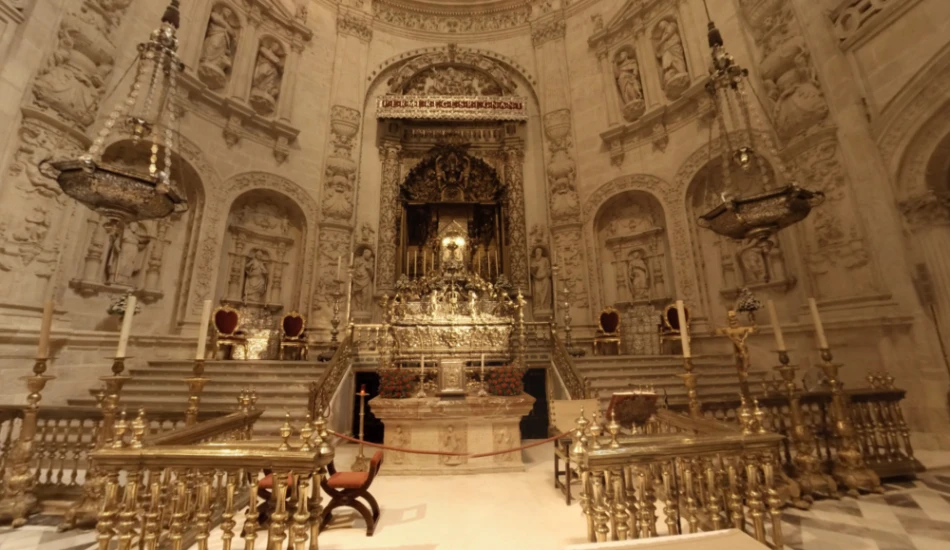
Seville Cathedral is home to an astonishing 80 chapels, like 80 mini-churches, each a masterpiece in its own right. That’s more chapels than churches in some cities!
Each chapel is dedicated to a different saint or religious figure, and every single one is a masterpiece of art and devotion.
These chapels have centuries-old paintings, intricate sculptures, and priceless relics. Some of the artwork dates back over 500 years, showcasing the skill of the greatest artists.
Mass was once held in all 80 chapels every single day, requiring a small army of priests.
Christopher Columbus kept traveling even after death
Seville Cathedral is the final resting place of the renowned explorer Christopher Columbus. But his remains didn’t arrive here easily.
Columbus’ body has been moved at least five times, traveling across oceans almost as much as he did in life! From Spain to the Dominican Republic, then to Cuba, and finally back to Seville in 1898, his journey ended in an elaborate tomb near the cathedral’s entrance.
He isn’t the only significant figure resting in the cathedral. His son, Ferdinand Columbus, who built an incredible library and was a great explorer, is also buried here.
Also buried here:
- Alfonso X of Castile, “The Wise”
- Ferdinand Columbus (his son)
- King Fernando III of Castile
Its art collection is worth billions
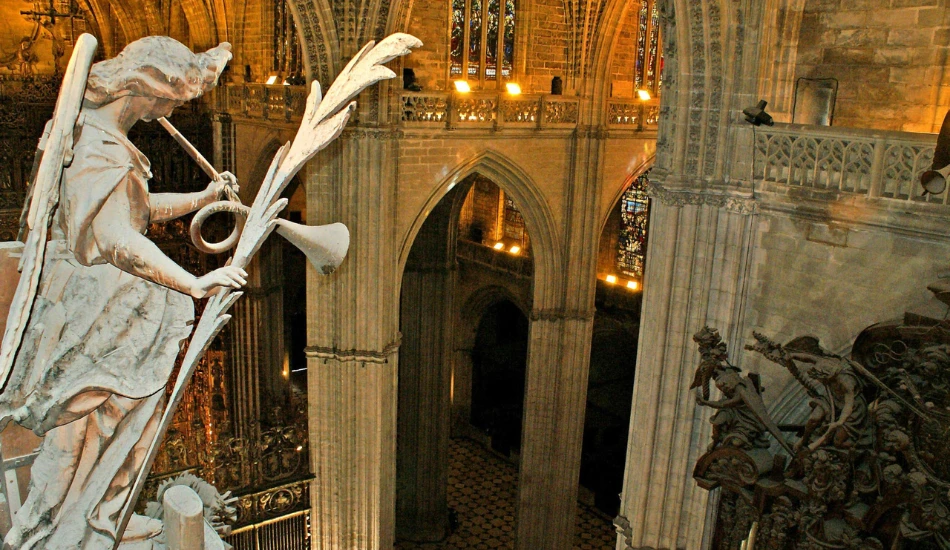
The cathedral is home to an extraordinary collection of artworks. Inside, you’ll find incredible works by Spanish masters like Murillo, Velázquez, Goya, and Zurbarán—some of the greatest artists in history.
The most jaw-dropping feature is the main altarpiece, which took 80 years to create. It’s the largest globally, with over 1,000 carved biblical figures. Each figure is so detailed that you can almost feel their emotions.
The cathedral’s choir stalls are another masterpiece. They’re decorated with carvings of mythical creatures, saints, and Bible stories.
It’s estimated that Seville Cathedral’s art collection is worth billions of dollars, making it one of the most valuable religious sites on Earth.
The cathedral breathes like a living being
In 2006, scientists discovered something amazing about Seville Cathedral: it breathes!
Its massive vaults actually expand and contract by up to 3 centimeters (1.2 inches) every single day, like a living organism.
This “breathing” happens because of temperature changes. When it’s hot, the stone slightly expands, and when it cools down, it contracts.
This small daily movement helps the structure stay strong and adapt to the environment.
What’s truly shocking is that this intelligent design has kept the cathedral standing for over 600 years, surviving earthquakes, storms, and the wear of time.
The crocodile that tried to seal a royal marriage

In Seville Cathedral, near the Puerta del Lagarto (Lizard Door), you’ll find something you wouldn’t expect in a church—a wooden crocodile hanging from the ceiling! But the story behind it is even more surprising.
Legend says that an Egyptian sultan sent a live crocodile and other exotic gifts to King Alfonso X of Castile in the 13th century to propose marriage between the sultan’s daughter and the king!
The sultan hoped the rare animals would impress the king.
The proposal was declined, and the crocodile ended up living in the royal court, symbolizing this strange and fascinating tale.
Over time, the crocodile died, and a wooden replica was made to preserve the story.
Bonus: The Pipe Organ that shakes the walls
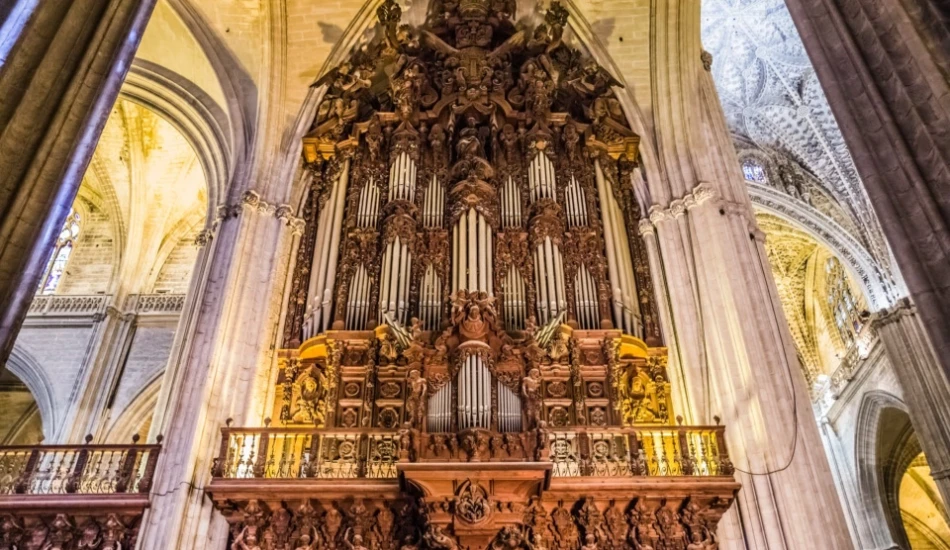
One of Spain’s most impressive pipe organs, with over 7,000 pipes, is housed in Seville Cathedral.
Some of these pipes are as tall as a three-story building, and together, they produce a sound so powerful it can shake the walls and echo through the entire cathedral.
Built centuries ago, its intricate design and craftsmanship are mind-blowing.
Every single pipe was carefully crafted and tuned to create music that’s not only loud but deeply emotional, touching every listener’s heart.
When played during special concerts, the organ’s music takes full advantage of the cathedral’s exceptional acoustics, creating a magical experience that visitors never forget.
Want to see all this up close? Book your Seville Cathedral tickets online to skip queues and get access to the cathedral and Giralda Tower. Don’t forget to check combo tickets with Alcazar for the best value.

